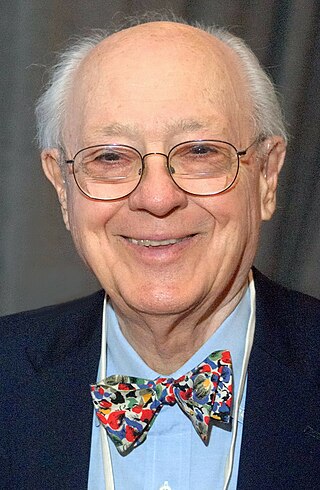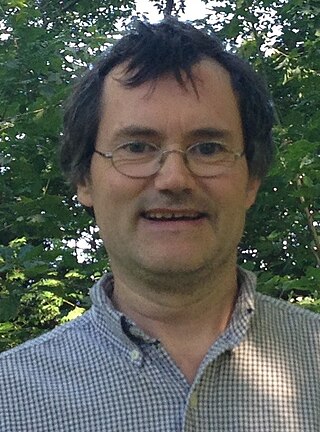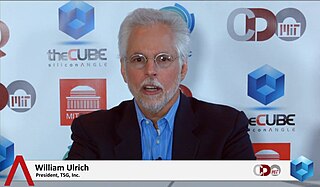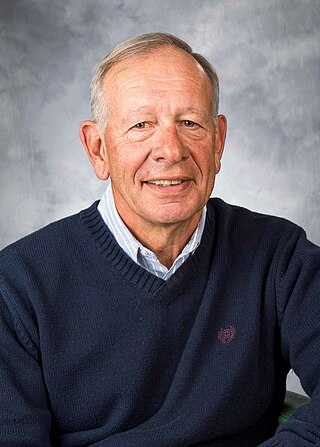Related Research Articles

Charles William Bachman III was an American computer scientist, who spent his entire career as an industrial researcher, developer, and manager rather than in academia. He was particularly known for his work in the early development of database management systems. His techniques of layered architecture include his namesake Bachman diagrams.
GXL is designed to be a standard exchange format for graphs. GXL is an extensible markup language (XML) sublanguage and the syntax is given by an XML document type definition (DTD). This exchange format offers an adaptable and flexible means to support interoperability between graph-based tools.
Software visualization or software visualisation refers to the visualization of information of and related to software systems—either the architecture of its source code or metrics of their runtime behavior—and their development process by means of static, interactive or animated 2-D or 3-D visual representations of their structure, execution, behavior, and evolution.
Vasant G. Honavar is an Indian born American computer scientist, and artificial intelligence, machine learning, big data, data science, causal inference, knowledge representation, bioinformatics and health informatics researcher and professor.
Rigi is an interactive graph editor tool for software reverse engineering using the white box method, i.e. necessitating source code, thus it is mainly aimed at program comprehension. Rigi is distributed by its main author, Hausi A. Müller and the Rigi research group at the University of Victoria.
The Stevens Award is a software engineering lecture award given by the Reengineering Forum, an industry association. The international Stevens Award was created to recognize outstanding contributions to the literature or practice of methods for software and systems development. The first award was given in 1995. The presentations focus on the current state of software methods and their direction for the future.
The Bauhaus project is a software research project collaboration among the University of Stuttgart, the University of Bremen, and a commercial spin-off company Axivion formerly called Bauhaus Software Technologies. The Bauhaus project serves the fields of software maintenance and software reengineering.
Reverse engineering is a process or method through which one attempts to understand through deductive reasoning how a previously made device, process, system, or piece of software accomplishes a task with very little insight into exactly how it does so. It is essentially the process of opening up or dissecting a system to see how it works, in order to duplicate or enhance it. Depending on the system under consideration and the technologies employed, the knowledge gained during reverse engineering can help with repurposing obsolete objects, doing security analysis, or learning how something works.

Joseph Brant Arseneau is an entrepreneur and executive, best known for his work in both fintech and space technology. He is generally known in finance for his work in Electronic Trading, Renewable Energy Derivatives, and Capital Markets technology. He has been both a chief information officer (CIO) for large banks and an entrepreneur, having started several fintech start-ups. Arseneau has moved into the NewSpace industry and is currently a founding partner at 9Point8 Capital and a founder of Spaced Ventures.
Informatics is the study of computational systems. According to the ACM Europe Council and Informatics Europe, informatics is synonymous with computer science and computing as a profession, in which the central notion is transformation of information. In other countries, the term "informatics" is used with a different meaning in the context of library science, in which case it is synonymous with data storage and retrieval.

Timothy Christian Lethbridge is a British/Canadian computer scientist and Professor of Computer Science and Software Engineering at University of Ottawa, known for his contributions in the fields of software engineering, knowledge management and computer animation, and the development of Umple.

Qiang Yang is the Chair Professor, Department Head of CSE, HKUST in Hong Kong and University New Bright Professor of Engineering and Chair Professor from 2015. He was the founding head of Noah's Ark Lab. He had taught at the University of Waterloo and Simon Fraser University. His research interests are data mining and artificial intelligence.
Bernd Bruegge is a German computer scientist, full professor at the Technische Universität München (TUM) and the head of the Chair for Applied Software Engineering. He is also an adjunct associate professor at Carnegie Mellon University (CMU) in Pittsburgh.
Axel van Lamsweerde is a Belgian computer scientist and Professor of Computing Science at the Universite catholique de Louvain, known for his work on requirements engineering and the development of the KAOS goal-oriented modeling language.

William M. Ulrich is an American business architecture consultant, consultant at Cutter Consortium, director and lecturer, known for development of 'The Systems Redevelopment Methodology' (TSRM) in the 1990s, on legacy systems in the 2000s and more recently on his work on business architecture.
Alan F. Blackwell is a New Zealand-British cognition scientist and professor at the Computer Laboratory, University of Cambridge, known for his work on diagrammatic representation, on data and language modelling, investment modelling, and end-user software engineering.

Larry E. Druffel is an American engineer, Director Emeritus and visiting scientist at the Software Engineering Institute (SEI) at Carnegie Mellon University. He has published over 40 professional papers/reports and authored a textbook. He is best known for leadership in: (1) bringing engineering discipline and supporting technology to software design and development, and (2) addressing network and software security risks.
References
- ↑ Biggerstaff, Ted J., Bharat G. Mitbander, and Dallas E. Webster. "Program understanding and the concept assignment problem." Communications of the ACM 37.5 (1994): 72-82.
- ↑ Anquetil, Nicolas, and Timothy C. Lethbridge. "Experiments with clustering as a software remodularization method." Reverse Engineering, 1999. Proceedings. Sixth Working Conference on. IEEE, 1999.